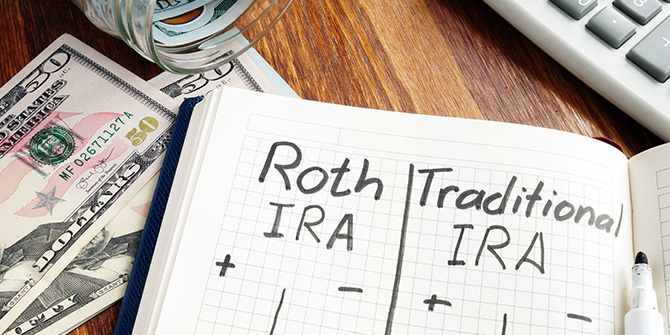
Before putting money into your Traditional, Roth or SEP individual retirement account (IRA), it’s important to know a few specifics: how to contribute; if you’re eligible, the maximum amount you can contribute; and how to make catch-up contributions.
What is an IRA?
An IRA lets you save for retirement in the absence of or in addition to an employer’s plan. Your contributions grow tax-free or on a tax-deferred basis depending on the type of IRA you choose. The Internal Revenue Service (IRS) has general rules for annual contributions to IRAs. One of the most important rules is that you have until the tax filing deadline of the current year to make contributions to an IRA for the previous calendar year. In addition, you can contribute up to the IRS’ annual maximum contribution amount each year you have earned income. Other rules vary by the type of IRA you have.
Traditional IRA. You can deposit the maximum contribution amount into your Traditional IRA annually as long as you have earned income. Plus, depending on your income limit and filing status, contributions may be tax deferred. Your contributions may be further limited if you and/or your spouse are covered by a retirement plan at work. If you contribute more than the limit, you’ll have to pay an excess contribution tax if the funds are not removed by the deadline. Required minimum distributions begin at age 72.
Roth IRA. Since contributions to a Roth IRA are not tax-deductible, you can continue to add money at any age up to the IRS’ annual maximum contribution amount as long as you have earned income. Another benefit of a Roth IRA is that contributions can be withdrawn at any time tax- and penalty-free.
SEP IRA. If you’re an employee of a business with a Simplified Employee Pension (SEP) IRA, your employer decides annually what amount, if any, to contribute to your account. If your employer decides to make a contribution, then your employer must contribute to all eligible employees. Check the IRS' SEP contribution limits page for specific amounts. If you’re self-employed, use this IRS calculator to figure out your contributions and deductions.
Catch-up contributions
Perhaps in the past, you weren’t able to save as much as you would have liked to your retirement fund. Here’s where the IRS offers a little help. If you’re age 50 or over, you can make additional contributions beyond the normal IRS limits. Just be sure to make your catch-up contributions before the tax filing deadline so it counts for the prior calendar year.
Make contributing easier for yourself
For convenient, consistent contributions to your retirement, it’s a good idea to set up an automated Funds Transfer to your IRA. If you don’t have the money in hand, you won’t be tempted to spend it.
The advice provided is for informational purposes only. Contact a financial advisor for additional guidance.